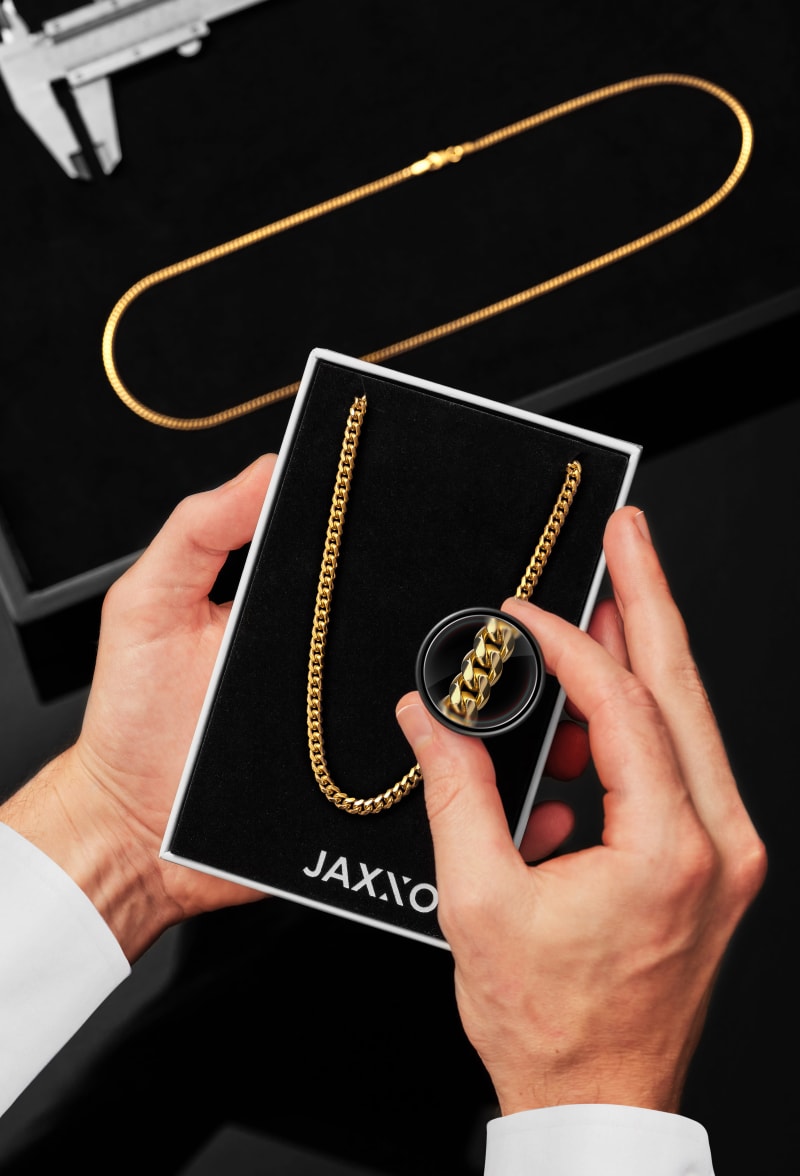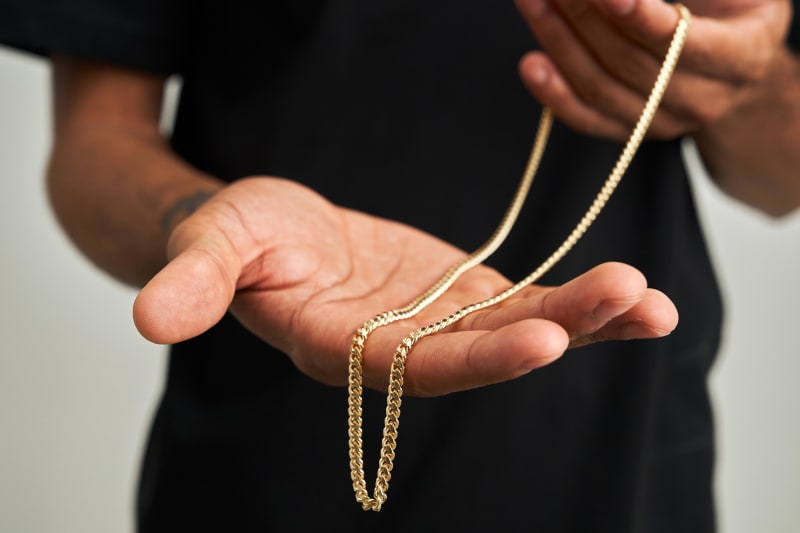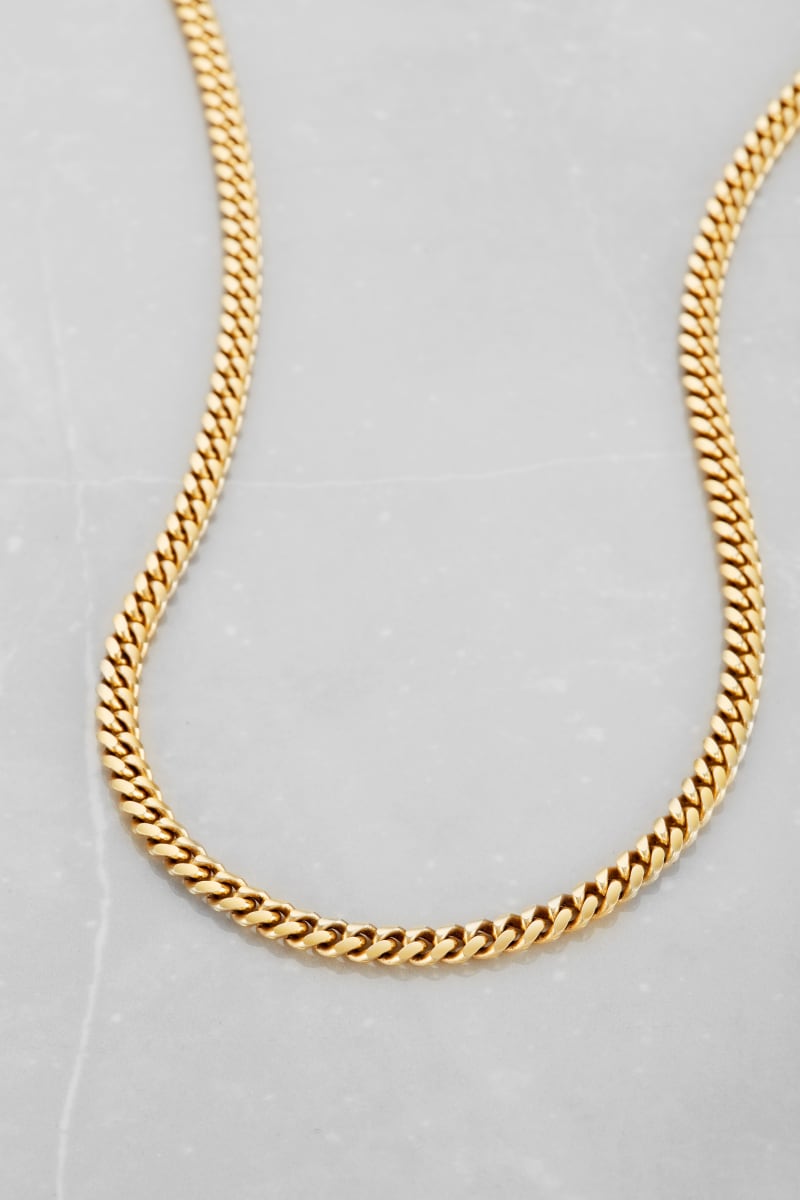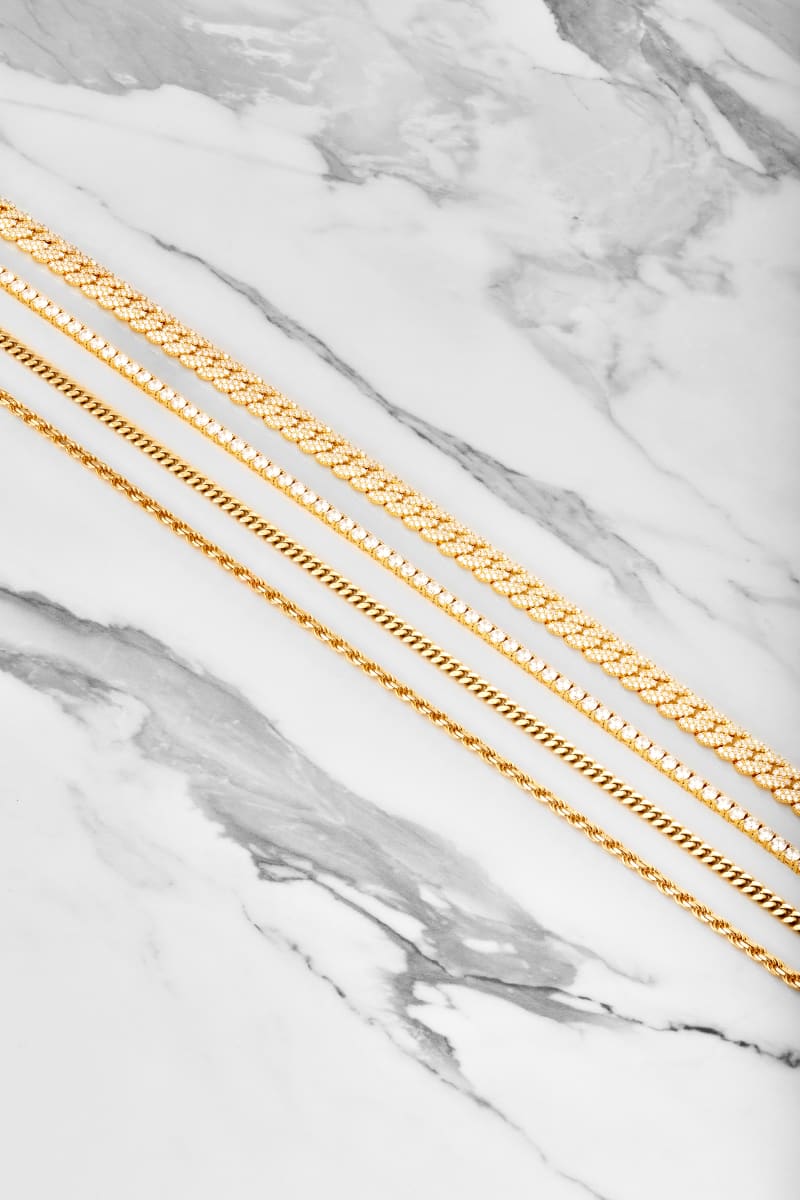It’s the first question we ask when we see a glimmering gold piece for the first time: is it real?Maybe you don’t want to say this out loud when admiring a friend’s new necklace or bracelet, but you’re probably wondering about it in the back of your mind! That’s a totally normal reaction when seeing something as rare and luxurious as actual gold. You’re probably wondering if it’s pure gold or 14K gold.
How to Tell if Gold is Real?
Whether you’re shopping around for real gold jewelry or you just want to verify some items (coins, art, custom pendants, etc.) in your own collection, you’ll want to run some tests to make sure you’ve got the real goods.
Here are some tips and tests you can use to tell if gold is real on any type of necklace or item, so listen up—these methods may just save (or make) some money and time!
Get a Professional Opinion
This first tip might not help the at-home investigators out there, but it needs to be said: the best way to verify real gold is to take it to a professional jeweler and listen to what they have to say.
Whether it’s a standalone store in a strip mall or a high-end retailer on Rodeo Drive, these experts have the tools and know-how from years of experience to give you the full story in a short timeframe.
Feel free to perform the following tests at home and make your own discovery, but remember that there’s usually no substitute for a professional opinion.
At-Home Tests
Remember playing detective as a kid? It’s time to find that old magnifying glass because we’re going to look for clues that reveal the mystery of whether your gold is real or not.
With your magnifying glass ready, you’ll want to examine your gold for a few distinctive features—or lack thereof.
Authentic Gold
The first thing to look for is indicators of authenticity in the form of markings on the gold piece itself. Your goal here is to find stamps or any type of marking on your gold item that verifies its gold composition and gold purity.
Where should you start your search? On rings, the markings are typically on the interior surface, while necklaces and bracelets have these hallmarks near the clasp. More often than not, this quick step will reveal the truth about your item.
If you’ve got an authentic 14k solid gold wedding band, for example, it should have a 14K stamp, as is the norm in the United States. European gold is marked with a scale of 1 to 999, which means that the 14K equivalent is 585. These numbers explain the gold content.
Other markings to look for are GF (gold filled), GP (gold plated), and GEP (gold electroplate). While there is still a bit of real gold in each of these products, it’s usually just a fraction.
The Skin Test
Since authentic gold is chemically unique in that it doesn't easily react to environmental factors. Consider something like a copper penny, on the other hand, which will look dramatically different after just a few years of circulation.
Here is an easy test to look for signs of discoloration:
- Hold a gold chain or bracelet in between your fingers. (Make sure your hands are clean and dry.)
- Your fingers will begin to sweat and make contact with the gold jewelry.
- If your gold piece leaves a blue, green, or black discoloration on your fingers, it is most likely fake.
- If it leaves your fingers unaffected, then it’s real!
Bear in mind that If discoloration appears anywhere on your jewelry or gold coin, it’s either not real gold or the product of minimal gold plating. Alternatively, your gold item might need to be cleaned.
Another unmistakable signal of inauthentic gold is the visibility of another type of metal, such as sterling silver, brass, or nickel showing through the cracks of the surface. This could mean the gold you’re looking at is plated. While gold-plated jewelry and gold-bonded jewelry can be made well, it shouldn’t show through in cracks or with fading.
Besides that, you’ll want to look at the color and shininess of your piece to learn more. Depending on the caratage, genuine gold will have a yellow color that can range from bright to soft. If it looks red or orange, it’s most likely fake gold.
The Water Test
Let’s say you’ve got a jewelry piece that lacks any discernible markings, and you still can’t gather sufficient evidence with the magnifying glass to reach a verdict. That means it’s time to start performing tests to determine the weight, mass, and density of the material.
Actual gold is quite dense, meaning it should feel heavy in your hand and drop to the bottom of a water-filled vessel in an instant. You can also use a scale and a graduated cylinder to perform calculations that give you the jewelry piece’s exact density. With these measurements, you can determine whether you’ve got 14K, 18K, or 24K gold and if it’s even real gold in the first place.
Precious Metal Makes Precious Jewelry
There are many ways to test the realness of gold and its gold purity. Still, it’s always best to avoid this situation altogether by simply buying from reputable, reliable brands you can trust.
Maybe you’re looking for a men's gold rope chain, solid gold Cuban chain, or modern Franco chain bracelet to spruce up your style. The point is that you should know exactly what you’re getting when you buy, with no uncertainties or assumptions. Keep these tips in mind while growing your collection of real gold jewelry or shopping for the perfect gift.




